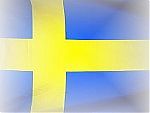15. Oktober 2012
Swedish in Sweden - Translation Tools
 The best way to find a good Swedish translation while in Sweden is to ask a Swede. Of course. And there is no surprise here. However, there are a couple of resources available on the web that help with translation when professional help is not available.
The best way to find a good Swedish translation while in Sweden is to ask a Swede. Of course. And there is no surprise here. However, there are a couple of resources available on the web that help with translation when professional help is not available.
(Note: this article is optimized for German/English speakers)
The People’s Dictionary is the most suitable dictionary for translating between English and Swedish as a foreign language that I have found so far. It offers not only word-by-word translations but also includes small exemplary phrases that help choosing the right word for the targeted context. The dictionary further lists verb conjugations and inflections of nouns.

A second helpful resource for word-for-word translation is the free Wiktionary. It seems far less complete than the People’s Dictionary, but the existing entries for single words are quite succinct, and usually come along with a few examples that show the usage of the word in context. Hyperlinks lets one look-up other words in the examples, which is especially helpful when words collocate.

While tyda.se seems to be a direct competitor with the People’s Dictionary at the first glance, a closer look reveals that it rather aims at helping Swedish native speakers with translating to English. The examples are given in English, and that is the main reason why the People’s Dictionary is most probably the better choice for those who learn Swedish.

MyMemory is a language resource, which I have not discovered until very recently. Instead of word-by-word translation, this website shows translations of small phrases side-by-side in the supposedly same context. MyMemory often provides translation examples from EU documents for which translations into many European languages are available. All those who know Linguee should be familiar with the context.

For German speakers, there is a rather young Swedish-German dictionary at www.dict.cc. It is well-arranged, but yet quite incomplete. It includes some set phrases and shows word inflections. In future, this dictionary might become on of the top choices for online dictionaries, but it currently is only now and then of really good use.

A good old wordbook: Norstedt’s svensk ordbok. It does not exactly provide direct translations, but covers a lot of words. The words are often explained with example sentences. Not so useful for absolute beginners, but increasingly useful in later stages.

Google Translate is of course not an insider tip. But so far, Google Translate seems to be performing worse in translating back and forth between German/English and Swedish than it does between German and English. I use it as a last resort or in order to obtain inspirations. Google Translate can also serve as a spelling-checker and a filter for non-existing words because these often appear untranslated in the otherwise machine-translated text.

Språkbanken is a powerful tool where one can search for items in large corpuses of text. This takes some time but the results comprise hundreds of example sentences and statistics. For example, the latter include statistics about collocations which is truly helpful in choosing the right word.

Google Search is no insider tip either, to put it mildly. But since more and more news are available on the internet, the news articles provide a quite reliable source in case one has already a Swedish translation for a word or whole phrase in mind. In order to verify the translation, I usually enclose the phrase into quotation marks such that Google only returns exact matches.

When text-based dictionaries fail, there is still Google Images. The results of an image search often give clues even about nuances in the meaning and the versatility of a word. For example, looking up the word “påse” on Google images shows the variety of bags covered by this name. Fortunately, when hovering over the images, a small textual description shows the word in context. Unfortunately, the image search also returns quite a few false positives.

From my experience, there is no single best translation tool on the web, but they are quite powerful in combination. While dictionaries that provide no context might be helpful with understanding a written text, they are of little help when it comes to apply the language actively: here, context is of great importance.
- Previous article in this series: Swedish in Sweden
- Next article in this series: Swedish in Sweden – Gathering New Input
All articles in this series:
- Swedish in Sweden
- Swedish in Sweden – Translation Tools
- Swedish in Sweden – Gathering New Input
- Swedish in Sweden – Learning to Listen
- Swedish in Sweden – Practice and Rehearsal
- Swedish in Sweden – Musings about Motivation